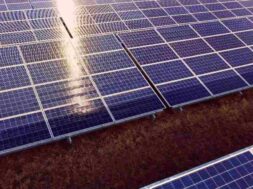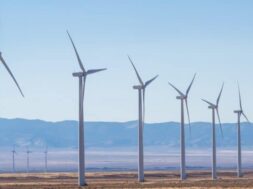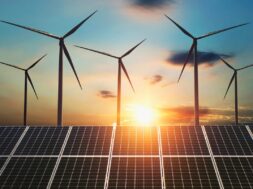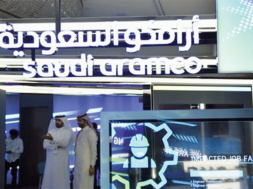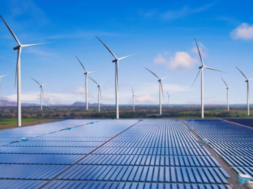
Egypt is well placed to produce and export fuel of the future green hydrogen, global energy strategist Mohamed Al-Sawy tells Ghada Raafat
Green hydrogen is all the rage these days, not least in Egypt, and this week Prime Minister Mustafa Madbouli met Norwegian renewable power producer Scatec to discuss opportunities for cooperation in producing and exporting this fuel of the future.
In December, Scatec signed a memorandum of understanding (MoU) with Egypt’s Suez Canal Economic Zone (SCZone) to study the setting up of a large-scale facility to produce ammonia from green hydrogen for export purposes.
Other companies are interested in producing the fuel itself including Eni, General Electric, and ThyssenKrupp. This week Minister of Electricity and Renewable Energy Mohamed Shaker told Al-Ahram that Egypt was preparing a 12-month strategy to determine opportunities for green hydrogen production.
The efforts follow President Abdel-Fattah Al-Sisi’s call last summer for an integrated national strategy to produce green hydrogen because of the growing international interest in this source of energy.
Green hydrogen is hydrogen produced by electrolysis using renewable energy. The method uses an electrical current to separate hydrogen from oxygen in water without producing carbon dioxide. The fuel thus produces zero emissions, and many see it as holding the answer to limiting global warming.
Renewable energy could cover the world’s energy demands several times over, Al-Sawy told Al-Ahram Weekly, which was why countries around the world are stepping up investments in it. Electricity produced from solar panels has become much cheaper, reaching two US cents for each kilowatt/hour (KW/h) of electricity, and nano-technology has been developed to prevent dust and sand accumulating on panels situated in countries such as Egypt to ensure they operate with maximum efficiency.
Using renewable electricity to drive water electrolysis and produce green hydrogen in large quantities is a viable option for Egypt, Al-Sawy said, adding that green hydrogen is preferable to both blue hydrogen produced from fossil fuels with carbon dioxide captured or expelled into the atmosphere, and grey hydrogen produced from natural gas and having a significant impact on climate change.
As the prices of natural gas increase in Europe, green hydrogen is becoming more competitive with fossil fuels, Al-Sawy said. It can be used in power stations and for industries such as iron and steel, fertilisers, and cement instead of fossil fuels, making products greener and eligible for tax and customs exemptions and competitive enough to be exported to European markets.
The Middle East and North Africa (MENA) region has sunlight of some 4,000 hours a year, much higher than Europe at only 2,000 hours, and this makes green hydrogen cheaper to produce in Egypt and other MENA countries, Al-Sawy said.
Green hydrogen can be exported by ship, and last year Kawasaki Heavy Industries built the world’s first liquefied hydrogen terminal and first liquefied hydrogen carrier. It can also be exported by underwater pipeline, in this case from Egypt to Greece where the water is not too deep and the costs therefore not too high.
Greece and Egypt agreed last Thursday to expand their cooperation in the supply of liquefied natural gas (LNG) and to examine the possibility of constructing an underwater gas pipeline between the two countries, according to the Greek Energy Ministry.
Last year, the two countries agreed to build an underwater cable linking their electricity grids, and there are ongoing talks about a natural gas pipeline, according to Reuters.
Green hydrogen made from renewable energy could cover Egypt’s energy needs, and it could also be used in the production of synthetic benzine and aviation fuel.
Public transport in Germany, the UK, and other countries is now partly using green hydrogen as a way of meeting carbon-neutral goals by 2050.
Egypt’s natural gas production, including at the Zohr Field, now amounts to an estimated 6.8 million cubic feet per day, 65 per cent of which goes to electricity production, with the rest going to industry and other usages, leaving only 0.8 million cubic feet per day for export.
Green hydrogen could replace natural gas for local consumption, saving a larger share of natural gas to be exported, Al-Sawy said, adding that forecasts show that the European countries will need the equivalent of 24 times the Zohr Field’s natural gas production by 2050.
Egypt has large amounts of desert land that could be used for solar-electricity production, Al-Sawy said, “but we should begin to build now.”
Saudi Arabia has already started a huge green hydrogen project worth $5 billion in its new city of Neom, and Morocco has received an equivalent of 300 million euros for research and development, hoping to capture four per cent of global hydrogen energy markets through its planned projects.
Al-Sawy said that Europe could assist Egypt in capacity building, technology transfer, and the financing of projects to produce green hydrogen for local use and export.



